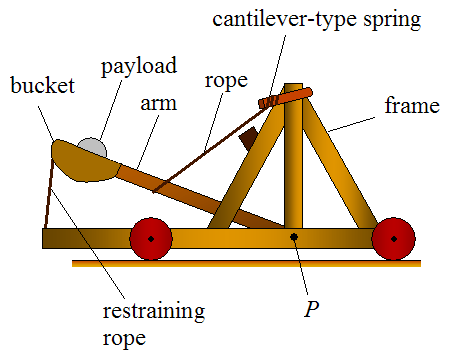Over the past few weeks, our exhibits team has been hard at work in their shop, sawing, drilling and assembling a full-size trebuchet for this weekend’s Austin Mini Maker Faire. “We decided to build a trebuchet because it is incredibly cool,” explains Associate Director of Education Adam Nye, “and people are drawn to it because of its size and power.” If you’re unfamiliar with trebuchets (pronounced “treb-YOO-shay”), or confuse them with catapults, here’s a quick primer.


A trebuchet is a form of catapult that gained popularity in medieval warfare due its superior range and payload capacity. Rather than using tension, trebuchets take advantage of gravity by dropping a heavy counterweight at one end of a lever arm to swing a payload from the other end. Think of a see-saw with an elephant at one end and a mouse at the other.
Basketballs and water balloons will be our payloads at the Austin Mini Maker Faire. It’s not quite “Lord of the Rings,” but it’s pretty darn close!

